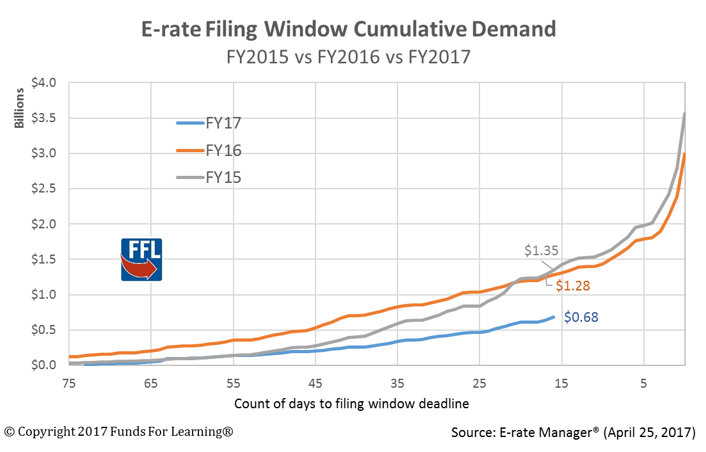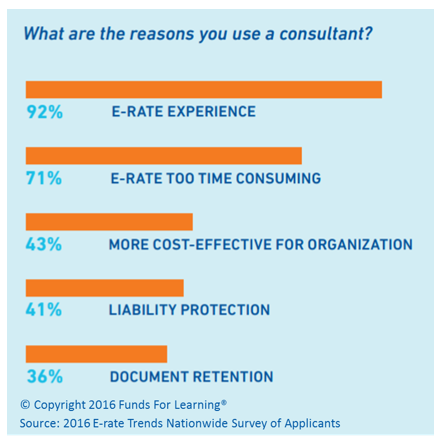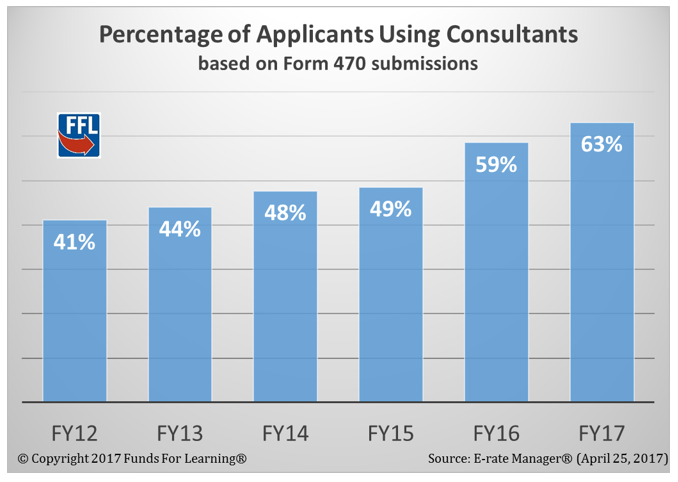The E-rate filing window closes in two weeks. If your organization’s funding requests are not submitted and certified, do not delay. Finish your application work today. As indicated in the analysis below, applicants are struggling to get their Forms submitted and it is important that applicants give themselves as much time as possible to submit E-rate paperwork.
Fewer applicants and applications
The decline in applicants that started last year is continuing this year. 12% fewer applicants submitted Form 470s in 2017 than did in 2016. (This follows a 10% decline from 2015 to 2016). When fewer applicants request service proposals, there are fewer applicants to submit Form 471 funding requests.
.png)
In any given year, multiyear service agreements and state master contracts reduce the total number of applicants who are required to post a Form 470. Historically, there are about 5% more applicants who submit a Form 471 than who post a Form 470. This ratio is very consistent, and, if it holds true this year, we expect to see nearly 3,000 fewer applicants benefiting from E-rate discounts in 2017. If this forecast is correct, it will mean a 20% reduction in applicants since the introduction of the EPC system.
Closely related to the number of applicants is the number of applications. Applicants can submit multiple forms. The chart below shows the number of Forms 470 and 471 submitted each year. As with the number of applicants, we have seen a sharp decline in the count of Forms submitted. We estimate fewer than 40,000 Form 471 applications will be submitted this year. This is a 20% decline from the pre-EPC peak count of 48,206 in FY2015.
.png)
Less money requested (so far)
Every funding window seems to take on its own personality, and it can be dangerous drawing conclusions by comparing one year to another; however, the total funding requested as of today, two weeks from the close of the filing window, is downright shocking. Only about half as much money has been requested so far. Of course, there is always a spike in demand near the end of the filing window — and there is no reason to expect this year to be different in that regard. Nevertheless, unless there is a record increase near the end, it is unlikely that the demand this year will match the demand in prior years.

Internet usage and the need for on-campus Wi-Fi is rising; but the demand for E-rate discounts does not seem to match this reality. What could account for this apparent disconnect? The phase-out of voice services may be part of the answer, but demand is down in all categories, not just voice services. It is more likely that the lower demand is tied to the drop in the number of applicants (because of EPC) and the challenges encountered by the remaining applicants as they try to build and submit funding requests in EPC.
More need of assistance
Applicants use third-parties to help them with E-rate applications for a variety of reasons. In the 2016 E-rate Trends Report, 92% of applicants who use a consultant indicated that they did so because of their E-rate experience. 72% said it was because the E-rate is “too time consuming.”

Based on this feedback, it is no surprise that the percentage of applicants using consultants continues to rise. The complexity of using EPC and the extra time it takes to complete paperwork appears to be pushing more applicants to consider third-party support.

